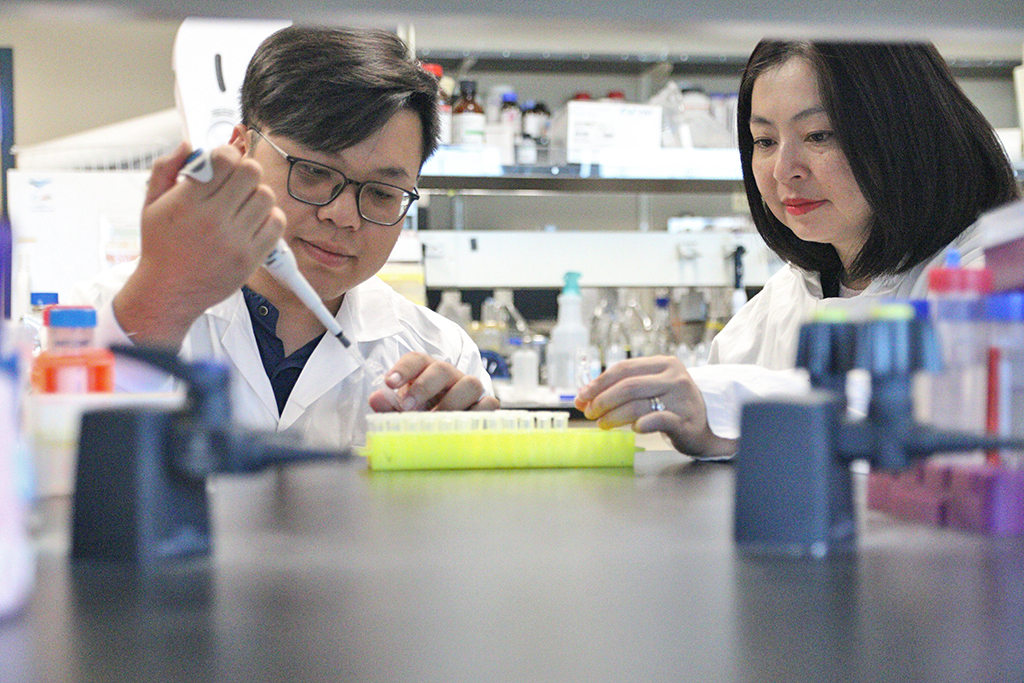
Researchers at the University of British Columbia’s Okanagan campus have made a significant breakthrough in understanding how plants produce mitraphylline, a rare natural compound with potential anti-cancer properties. This discovery could pave the way for sustainable production of this and similar compounds, which belong to a unique group of plant molecules known as spirooxindole alkaloids.
Mitraphylline, characterized by its unusual “twisted” ring structures, is known for its potent effects against tumors and inflammation. However, the molecular processes by which plants synthesize these spirooxindoles have long remained a mystery. In 2023, Dr. Thu-Thuy Dang’s research group at the Irving K. Barber Faculty of Science identified the first plant enzyme capable of twisting a molecule into the spiro shape, a discovery that Dr. Dang likens to finding “the missing links in an assembly line.”
Unraveling the Enzymatic Pathway
Building on this foundational work, doctoral student Tuan-Anh Nguyen spearheaded efforts to identify a pair of enzymes crucial to the production of mitraphylline. One enzyme sets up the molecules’ three-dimensional configuration, while the other twists it into its final form. This enzymatic roadmap now offers a sustainable method for producing mitraphylline and related compounds.
Natural compounds like mitraphylline are typically found in very small quantities in plants, making laboratory reproduction both challenging and costly. Mitraphylline, for instance, occurs only in trace amounts in tropical trees such as Mitragyna (kratom) and Uncaria (cat’s claw), both members of the coffee family.
“With this discovery, we have a green chemistry approach to accessing compounds with enormous pharmaceutical value,” says Nguyen. “This is a result of UBC Okanagan’s research environment, where students and faculty work closely to solve problems with global reach.”
Collaborative Efforts and Support
The project is a collaborative effort between Dr. Dang’s lab at UBC Okanagan and Dr. Satya Nadakuduti’s team at the University of Florida. It has received support from Canada’s Natural Sciences and Engineering Research Council’s Alliance International Collaboration program, the Canada Foundation for Innovation, and the Michael Smith Health Research BC Scholar Program, as well as the United States Department of Agriculture’s National Institute of Food and Agriculture.
Dr. Dang expressed pride in the discovery, stating, “Plants are fantastic natural chemists. Our next steps will focus on adapting their molecular tools to create a wider range of therapeutic compounds.”
Implications for Future Research
This breakthrough not only sheds light on a long-standing scientific question but also opens doors for further research into plant-based pharmaceuticals. By understanding and replicating the natural processes used by plants, scientists can potentially develop new drugs that are both effective and environmentally friendly.
The implications of this research extend beyond cancer treatment. The ability to produce complex natural compounds sustainably could revolutionize the pharmaceutical industry, offering new treatments for a variety of diseases. As the world increasingly turns to sustainable solutions, the work being done at UBC Okanagan highlights the potential of plant-based chemistry to meet global health challenges.
Looking ahead, the research team plans to explore the broader applications of their findings, aiming to harness the full potential of spirooxindole alkaloids in medicine. With continued support and collaboration, they hope to expand their research to include a wider array of therapeutic compounds, ultimately contributing to the development of innovative treatments with a reduced environmental footprint.







